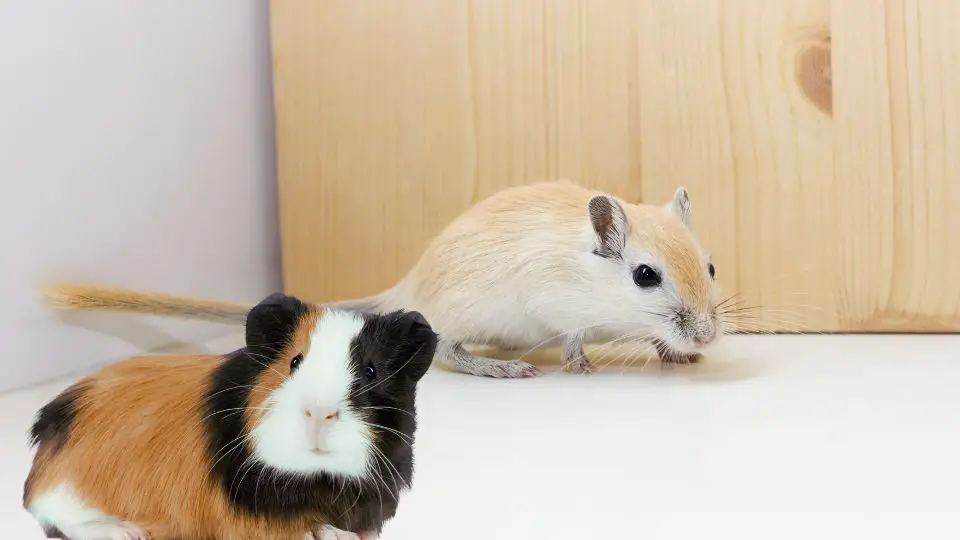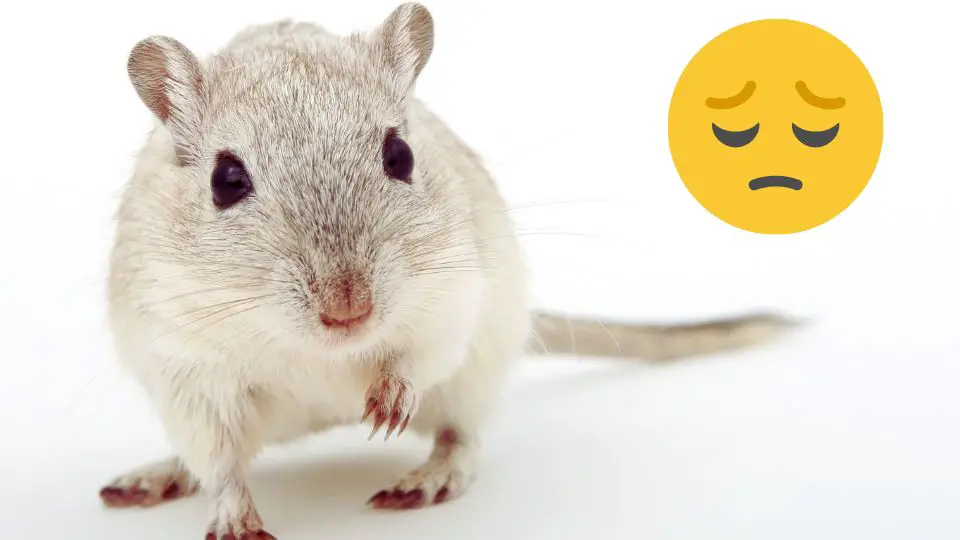Creating a cozy and enriching habitat for your gerbils involves choosing the right bedding for their tunnels. Bedding not only provides comfort but also stimulates their natural burrowing instincts.
In this article, we will explore some of the best bedding options that are ideal for gerbil tunnels, discussing their characteristics, pros, and cons.
By selecting the appropriate bedding, you can ensure a safe and enjoyable environment for your gerbils to thrive.
Characteristics of Ideal Bedding for Tunnels
When it comes to providing the best bedding for gerbil tunnels, certain characteristics are essential to ensure the comfort and well-being of your furry friends. Gerbils are natural burrowers, so choosing the right bedding is crucial to facilitate their instinctual behaviors and create a cozy habitat. Here are the key characteristics that we recommend for finding ideal bedding for gerbil tunnels:
- Soft and comfortable texture: Opt for bedding materials that are soft to the touch, providing a comfortable surface for your gerbils to burrow and nest in. Avoid rough or abrasive textures that could irritate their delicate skin.
- Excellent absorbency to control moisture: Look for bedding that has high absorbency to effectively control moisture in the gerbil’s habitat. Gerbils produce urine, and bedding with good absorbency will help keep their environment clean and dry.
- Dust-free and hypoallergenic: Gerbils have sensitive respiratory systems, so it’s important to choose bedding that is dust-free and hypoallergenic. Dust particles can irritate their lungs and lead to respiratory issues, so opt for bedding that minimizes dust and potential allergens.
- Non-toxic and safe for gerbils: Ensure that the bedding you choose is non-toxic and safe for gerbils. Avoid using materials that contain chemicals, dyes, or additives that could be harmful if ingested or inhaled by your gerbils.
- Easy to burrow and create tunnels: The bedding should be loose and easy for gerbils to burrow into, allowing them to create tunnels and nest comfortably. Materials that can be easily manipulated and shaped will provide your gerbils with the opportunity to exhibit their natural burrowing behaviors.
Recommended Bedding Options
Each type of bedding has its own unique characteristics, pros, and cons. Here are some popular bedding options for gerbil tunnels:
Aspen shavings
Aspen shavings are a popular choice for bedding in gerbil enclosures due to their natural properties and suitability for burrowing. Here are some pros and cons of using aspen shavings as gerbil bedding:
Pros:
- Natural and Safe: Aspen shavings are derived from aspen trees, making them a natural and non-toxic bedding option for gerbils. They are generally considered safe and suitable for small animals.
- Soft and Comfortable: Aspen shavings provide a soft and comfortable surface for gerbils to burrow and nest in. The fine texture of the shavings offers a cozy environment for your gerbils to rest and play.
- Absorbent: Aspen shavings have good absorbency, helping to control moisture and keep the enclosure dry. This can be beneficial for maintaining the overall hygiene of the habitat.
- Suitable for Burrowing: Gerbils are known for their burrowing instincts, and aspen shavings allow them to engage in this natural behavior. The shavings can be easily manipulated and shaped by gerbils to create tunnels and nests.
Cons:
- Odor Potential: One potential drawback of aspen shavings is that they may have a slight odor compared to some other bedding options. However, this odor is generally mild and may not be a significant issue for most gerbil owners.
- Dust: While aspen shavings are typically considered low-dust bedding, some batches or brands may still contain dust particles. It’s important to choose high-quality aspen shavings to minimize dust exposure to your gerbils.
- Cost: Aspen shavings may be slightly more expensive compared to other bedding materials available for gerbils. However, the cost can vary depending on factors such as brand, quantity, and location.
When using aspen shavings as gerbil bedding, it’s crucial to maintain good hygiene by regularly spot-cleaning the enclosure and replacing soiled bedding as needed. Keep in mind that individual gerbils may have their own preferences and sensitivities, so you should observe your small pet behavior and adjust the bedding if necessary.
Paper-based bedding
Paper-based bedding is a popular choice for gerbil owners due to its many advantages. This type of bedding is made from shredded or recycled paper materials and offers several benefits for gerbil health and habitat maintenance. Here is what we like and don’t like about paper-based bedding:
Pros:
- Highly Absorbent: Paper-based bedding has excellent absorbency, which helps to control moisture and prevent odors in the gerbil enclosure. It effectively absorbs urine, keeping the habitat clean and dry.
- Dust-Free: Paper-based bedding is typically dust-free, making it a suitable option for gerbils with respiratory sensitivities or allergies. The absence of dust particles reduces the risk of respiratory irritation or discomfort.
- Environmentally Friendly: Using paper-based bedding promotes eco-friendliness as it is often made from recycled paper materials. By choosing this bedding option, you contribute to reducing waste and environmental impact.
- Easy to Burrow: Gerbils are natural burrowers, and paper-based bedding provides a soft and malleable material for them to dig tunnels and create nests. The texture of the bedding encourages their natural behavior and provides them with a comfortable and enriching habitat.
Cons:
- Less Durable: Compared to some other bedding materials, paper-based bedding may be less durable and may require more frequent replacement. Gerbils can easily shred and manipulate the paper, causing it to break down faster.
- Limited Odor Control: While paper-based bedding is absorbent, it may not offer the same level of odor control as some other options. Regular spot-cleaning and bedding replacement are necessary to maintain a fresh-smelling enclosure.
- Availability and Cost: Depending on your location, paper-based bedding may not be as readily available as other bedding options. Additionally, it may be more expensive compared to some traditional bedding materials.
When using paper-based bedding, you should monitor the condition of the bedding regularly and replace it when soiled or wet to maintain a clean and hygienic environment for your gerbils. Additionally, ensure that the paper-based bedding you choose is specifically designed for small animals and is free from harmful additives or chemicals.
Coconut coir
Coconut coir is a unique and eco-friendly bedding option that has gained popularity among gerbil owners. It is made from the fibrous material found in coconut husks and offers several benefits for both gerbil health and habitat maintenance. Here are the pros and cons:
Pros:
- Eco-friendly: Coconut coir is a natural and sustainable option for bedding. It is derived from renewable coconut husks, making it an environmentally friendly choice for gerbil owners who prioritize sustainability.
- Moisture Absorbent: Coconut coir has excellent moisture absorbency, helping to control humidity levels in the gerbil enclosure. It absorbs moisture effectively, keeping the habitat dry and reducing the risk of odor buildup.
- Soft and Comfortable: Gerbils enjoy burrowing and nesting, and coconut coir provides a soft and comfortable material for them to engage in their natural behaviors. It offers a cozy and supportive surface for their activities and promotes their overall well-being.
- Natural Look and Feel: Coconut coir has a natural appearance and texture, which can enhance the aesthetic appeal of the gerbil habitat. It adds a touch of nature to the enclosure and creates a visually pleasing environment.
Cons:
- Additional Nesting Material Required: While coconut coir provides a suitable base for gerbil bedding, it may require additional nesting material such as shredded paper or hay to create cozy nests. Gerbils often prefer to have additional materials to build their nests and create a sense of security.
- Potential for Mold Growth: Coconut coir, if not properly maintained, can retain moisture and become a breeding ground for mold or fungi. Regular monitoring and proper maintenance, including adequate ventilation, are essential to prevent mold growth.
- Availability and Cost: Coconut coir may not be as widely available as some other bedding options, and it can be more expensive due to its unique properties. Consider the availability and cost in your area before choosing coconut coir as bedding for your gerbils.
When using coconut coir as bedding, ensure that it is specifically labeled for use with small animals and is free from any harmful additives or chemicals. Monitor the bedding regularly, replace soiled areas promptly, and maintain proper ventilation to ensure a clean and healthy habitat for your gerbils.
Shredded paper or cardboard
Shredded paper or cardboard is a commonly used bedding option for gerbils that offers several benefits and considerations. It is a readily available and affordable choice that provides a soft and safe surface for your gerbil to burrow and nest. Here are some key points to consider:
Pros:
- Safe and Non-toxic: Shredded paper or cardboard is generally safe for gerbils. It does not contain harmful chemicals or toxins that can be harmful to their health. As long as the paper or cardboard used is clean and free from ink, dyes, or other potentially harmful substances, it can provide a safe bedding option for your gerbils.
- Readily Available: Shredded paper or cardboard is often easily accessible and can be obtained from common household items such as newspapers, cardboard boxes, or unwanted paper materials. It offers a cost-effective bedding option for gerbil owners who prefer a readily available and affordable choice.
- Nesting Material: Gerbils enjoy burrowing and creating nests, and shredded paper or cardboard provides them with the material they need to engage in these natural behaviors. It allows gerbils to construct cozy nests and tunnels, promoting their natural instincts and providing them with a sense of security and comfort.
- Environmental Benefits: Using shredded paper or cardboard as bedding can be an environmentally friendly choice. Instead of disposing of paper or cardboard waste, repurposing it as bedding for your gerbils reduces waste and contributes to a more sustainable approach.
Cons:
- Less Absorbent: Shredded paper or cardboard may not have the same level of absorbency as other bedding options, such as aspen shavings or paper-based bedding. This means it may require more frequent changes to maintain cleanliness and prevent odor buildup. Regular monitoring and prompt replacement of soiled bedding areas are essential.
- Potential Dustiness: Depending on the type of paper or cardboard used, there may be a risk of dust particles being generated, which can be harmful if inhaled by the gerbils. It’s important to select paper or cardboard that is clean and free from dust, and to monitor the bedding to ensure it remains dust-free.
- Limited Insulation: Shredded paper or cardboard may not provide the same level of insulation as some other bedding options. If your gerbil’s habitat is located in a colder environment, additional insulation may be necessary to maintain optimal temperature and prevent the gerbils from getting too cold.
When using shredded paper or cardboard as bedding, it’s important to ensure that the materials used are free from any inks, dyes, or potential contaminants. Avoid using materials with glossy coatings or printing inks, as they may contain harmful substances. Regularly monitor the bedding for cleanliness and replace soiled areas promptly to maintain a hygienic and comfortable environment for your gerbils.
Tips for Using Bedding in Gerbil Tunnels
Using bedding in gerbil tunnels is an important aspect of providing a comfortable and enriching habitat for your furry friends. Proper bedding helps support their natural burrowing instincts and promotes a healthy and stimulating environment. Here are our recommendations when using bedding in gerbil tunnels:
- Choose the Right Bedding: Select a bedding material that is suitable for creating tunnels. Bedding options like aspen shavings, paper-based bedding, coconut coir, or shredded paper/cardboard can work well. Avoid using materials that are dusty, aromatic, or potentially harmful to gerbils.
- Layer the Bedding: Add a generous layer of bedding to the bottom of the gerbil enclosure to create a soft and comfortable surface for burrowing. Ensure the bedding is evenly distributed to support tunnel construction and prevent uneven surfaces that may collapse.
- Provide Nesting Material: Gerbils love to build cozy nests within their tunnels. Offer additional nesting materials like torn tissue paper, untreated paper towels, or hay to encourage nesting behaviors. These materials provide warmth and security for your gerbils.
- Monitor and Refresh: Regularly monitor the bedding in the tunnels and refresh it as needed. Remove any soiled or wet bedding promptly to maintain cleanliness and prevent odor buildup. Adding fresh bedding will keep the tunnels clean and comfortable.
- Avoid Excessive Bedding: While gerbils enjoy burrowing and creating tunnels, avoid using an excessive amount of bedding that could lead to unstable tunnel structures or pose a risk of collapse. Ensure there is enough bedding to support their burrowing activities while maintaining the overall stability of the tunnels.
- Check for Safety: Periodically inspect the bedding and tunnels to ensure they are safe for your gerbils. Remove any sharp objects, plastic materials, or items that may cause harm or hinder their movements.
- Consider Enrichment: Enhance the tunnel experience by incorporating safe and stimulating objects, such as small tunnels, chew toys, or hiding spots, within the bedding. These additions promote exploration, play, and mental stimulation for your gerbils.
- Monitor Chewing Behavior: Gerbils have a natural instinct to chew, and they may chew on the bedding material. While some amount of chewing is normal, excessive chewing could indicate stress or boredom. Provide appropriate chew toys and monitor their chewing behavior to prevent ingestion of harmful materials.
- Maintain Cleanliness: Regularly clean and maintain the gerbil enclosure to ensure a hygienic environment. Remove soiled bedding, spot clean as needed, and replace the bedding in the tunnels periodically to prevent the buildup of waste and odors.
Conclusion
When it comes to providing the best bedding for gerbil tunnels, there are several options available, each with its own set of advantages and considerations. Aspen shavings offer a natural and burrow-friendly choice, while paper-based bedding is highly absorbent and dust-free.
Coconut coir provides an eco-friendly option with good moisture-absorption, and shredded paper or cardboard is a readily available and safe choice. By considering the pros and cons of each bedding option and understanding your gerbils’ needs, you can make an informed decision that promotes their well-being and satisfies their natural behaviors. Remember to monitor the bedding regularly, maintain cleanliness, and prioritize your gerbils’ safety and comfort in their tunnel habitat.







